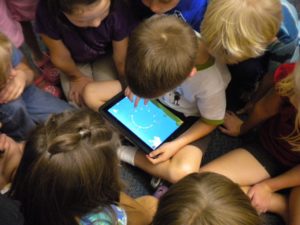
5 Tips for Expanding Student Engagement
Being a teacher today is one tough business. We are teaching in a world where social media is king and our content seems to be less and less appealing to our kids. Finding ways to bring content to our students, engage students and grab their attention is vital to our survival as teachers. We are constantly trying to keep up with trends that seem to change hourly.
Though the list of ways to expand student engagement is ever evolving, here are a few tips you can try!
1. Use Ed Tech
Challenge your students to use ed tech to create a formative assessment for your unit.

Are your students tired of boring old assessments? Are you a BYOD school, 1:1 school, or can you get your hands on some technology? There are so many ed tech options out there that you can use for assessments.
You can use Flocabulary’s Lyric Lab and have students create raps to demonstrate their understanding. If Flocabulary already has a rap for your topic, that makes it even better because you can challenge your students to make their rap better than Flocab’s! You can also have students create their own Kahoot! Kahoot! is a free game-based learning platform that allows students to create, play and share games! Students live for the competitiveness of Kahoot! Why not up the ante and challenge them to not only create the Kahoot! but to actually compete with each other’s Kahoot!s.
2. Let Students Choose
Open up
One way to improve student engagement is to open up your project options and give some options! You can have your students record videos of their reflections on a topic you are teaching using apps such as Flipgrid or Recap. Letting students share their own thoughts and feelings authentically really gives them ownership. If they’re the shy type and don’t want to record themselves, you can create a Padlet, an online collaboration tool, and allow them to share in that way, too.
If you are doing a research project, you can let them use a presentation tool like Buncee to create dynamic and interactive presentations. Buncee allows your students the ability add QR codes, videos, audio…you name it! They even have stickers and animations that cover a wide range of content areas!
3. Try Moving Around
If you don’t like to sit still all day, don’t make them!
I can admit that as a Middle School teacher, I struggle with is getting my kids up and moving during instructional time. There is a lot of research out there to support the importance of getting our students up and moving, as it helps with focus and retention of information.
Try incorporating some Kagan Structures into your classroom routine. Rally Table is one Kagan Structure I cannot wait to use in my classroom (and can be used seamlessly with Flocabulary, too!). During a Rally Table activity, you can turn on Flocabulary’s Discussion mode by splitting students into groups to answer each question on pieces of paper. For each Discuss question, you can have the kiddos get up and move to different groups.

4. Ask The Experts
If you want to boost student engagement, see if you can link up with the experts.
In this day and age, it is so easy to connect with people via Skype, Google Hangouts, FaceTime or Periscope. Many educational companies like Flocabulary, Buncee, Newsela and Kahoot LOVE to get first-hand commentary from kids. You can reach out to them and see if they’ll do a virtual meet-up with your class. In preparation for the meet-up, have your students prepare questions ahead of time and create a lesson that allows your guests to contribute as well!
5. Simulate History
Don’t just teach it – BE IT.

Back when I was in Middle School, my 8th grade Social Studies teacher took us outside to demonstrate the concept of “higher ground” as a military tactic in the US Civil War. We were divided into two groups — one group was told to go to the top of the hill and the other at the bottom as we threw nerf balls at each other. Afterwards, we discussed why it was easier to throw down a hill versus up a hill. Simulations have the power of really bringing your content to life.
One of my colleagues loves to create simulations for his Social Studies classes. To teach the different forms of government, he created a simulation based around a zombie apocalypse. For urbanization, I have played an Urban Game where students draw different elements of a town at different points throughout the urbanization process. As they progress through the game, students realize that they begin to run out of room and must get creative in order to add all the required town elements. This really helps them to understand the adverse effects that industrialization and urbanization had on towns and cities during this time.
Which of the five tips from above are you planning to incorporate in your classrooms this fall?
[Tweet “Learn about student engagement for back to school this year!”]

